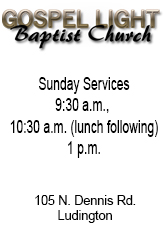
Glenn Miller Orchestra singer Laura Hart performing at West Shore Bank’s Rhythm & Dunes concert in 2013.
VICTORY TWP. – The West Shore Community College Performing Arts Series and the Ramsdell Theatre and Community Arts Center will host the world famous “Glenn Miller Orchestra” at the historic Ramsdell Theatre in Manistee, on Wed., March 18, at7:30 p.m.
According to the co-director of the Performing Arts Series and Professor of WSCC Music Ted Malt, “The first ‘Glenn Miller Orchestra’ did not make it at all. It was a total and absolute economic failure.”
But Miller knew what he wanted, held to that dedication and relentlessly worked to succeed. “He launched his second band–the one that lives on today–in March of 1938. The ‘Glenn Miller Orchestra’ has been a ‘hit’ ever since,” Malt adds.
 The legendary Glenn Miller was one of the most successful of all dance bandleaders back in the Swing Era of the 1930’s and 40’s. A matchless string of hit records, the constant impact of radio broadcasts and the drawing power at theatres, hotels and dance pavilion, built and sustained the momentum of popularity.
The legendary Glenn Miller was one of the most successful of all dance bandleaders back in the Swing Era of the 1930’s and 40’s. A matchless string of hit records, the constant impact of radio broadcasts and the drawing power at theatres, hotels and dance pavilion, built and sustained the momentum of popularity.
Miller disbanded his musical organization in 1942 at the height of its popularity to volunteer for the Army. There, he organized and led the famous “Glenn Miller Army Air Force Band.” It went to Europe to entertain servicemen performing numerous live and radio shows. On Dec. 15, 1944, Major Miller took off in a single engine plane from Europe to precede his band to France, disappearing over the English Channel, never to be seen again. The army declared him officially dead a year later.
With the release of the major motion movie “The Glenn Miller Story” featuring Jimmy Stewart and June Allyson in 1954, interest and popular demand led the Miller Estate to authorize the formation of the present “Glenn Miller Orchestra.” On June 6, 1956, and under the direction of drummer Ray McKinley who had become the unofficial leader of the “Army Air Force Band” (AAFB) after Glenn’s disappearance, the reformed “Glenn Miller Orchestra” performed its first concert and has been on the road ever since.
Other leaders have followed Ray including clarinetists Buddy DeFranco and Peanuts Hucko, trombonists Buddy Morrow, Jimmy Henderson, Larry O’Brien and Gary Tole, and tenor saxophonist Dick Gerhart. Since January 2012, vocalist Nick Hilscher leads the band.
Today, the 18 member ensemble continues to play many of the original Miller arrangements both from the civilian band and the AAFB libraries. Additionally, it also plays some more modern selections arranged and performed in the Miller style and sound. Just as it was in Miller’s day, the “Glenn Miller Orchestra” today is still the most sought after big band in the world.
“The Glenn Miller Orchestra” is a fully self-contained group consisting of the music director, five saxophone players, four trumpeters, four trombonists, and three rhythm musicians (piano, bass and drums). Also, there are two vocalists, one male and one female, who perform individually and as part of “The Moonlight Serenaders” vocal group.
The big-band business today requires almost constant travel as a result of an arduous schedule of one-night stands. The “Glenn Miller Orchestra” is “on the road” longer and more continuously than any other in the whole world, having celebrated its 56th year anniversary on June 6, 2012. It covers over 100,000 miles a year, working most every night for 48 weeks out of every 52-nearly 300 playing dates, performing for an “in person” audience that adds up to more than a half million people annually.
The orchestra has performed in all 50 United States, as well as throughout Europe, Australia, Iceland, New Zealand, Guam, the Philippines, South and Central America. The orchestra’s tour of Japan during November/December 2013 was its 46th annual tour of that country.
The “Road Book” carried by the “Glenn Miller Orchestra” adds up to over 300 charts – many of them out of the original library. Today, the complete library totals over 1,700 compositions including all of the original charts from both the civilian band and the “Army Air Force Band.”
Of course, all of the biggest hits are included in a regular program performance will include some of the following selections from the “Glenn Miller Orchestra” library: “Moonlight Serenade,” “Sunrise Serenade,” “St. Louis Blues March,” “Little Brown Jug,” “At Last,” “Tuxedo Junction,” “Stardust,” “A String of Pearls,” “The American Patrol,” “Elmer’s Tune,” “In The Mood,” “ Chattanooga Choo-Choo,” “I’ve Got a Gal in Kalamazoo,” “Pennsylvania 6-5000,” “Rhapsody in Blue,” “Perfidia,” “Jeep Jockey Jump,” “Someone To Watch Over Me,” “Juke Box Saturday Night,” and “Don’t Sit Under the Apple Tree.”
Also included in the concert are arrangements of less well-known tunes like “The White Cliffs of Dover,” “Rainbow Rhapsody,” “Everybody Loves My Baby,” and “That’s Sabotage.”
The Miller library features contributions from many fine arrangers including Bill Finegan, Jerry Gray, Billy May, Mort Lindsay, Deane Kinkaide, Joe Cribari, and Dave Wolpe. They have added such numbers as “Over the Rainbow,” “September Morn,” “The Body Electric” from the T.V. series “Fame,” “Up Where We Belong,” from the hit movie, “An Officer and a Gentleman,” and “Star Wars/War of The Stars.”
The “Glenn Miller Orchestra” has always been very musical, disciplined, and visually entertaining. And it has its own distinctive “sound.”
That sound is created by the clarinet holding the melodic line, doubled or coupled with the tenor sax playing the same notes; and the harmonies produced by three other saxophones, while growling trombones and wailing trumpets add their oo-ahs.
Glenn Miller and his orchestra made a big impact right before and during the war. And it had more hit records in one year than anybody in the history of the recording industry. In fact, its recording of “Chattanooga Choo-Choo” earned the first Gold Record ever awarded to a performing artist. Additional Gold Record recordings include “In the Digital Mood” and “In the Christmas Mood,” Volume I & II. And Miller’s recording of “In the Mood,” is almost a theme song for an entire generation and era.
Back in the days of the big band era of the 40s, any dance band “worth its salt” had a distinctive theme song. It was the musical signature with which they signed on and signed off at their engagements and radio broadcasts. The theme of “Glenn Miller Orchestra” was the beautiful “Moonlight Serenade,” and it is still the signature tune of the “Glenn Miller Orchestra” today.
Glenn Miller originally wrote the music of the song himself as an exercise for a course in arranging. He composed it long before he organized his band, when he was a trombonist and arranger with Ray Noble’s famous band.
Today, it is considered a standard in the field of popular music with its popularity as an instrumental continuing undiminished through the years.
It is now more than 75 years since Glenn Miller first succeeded with the orchestra, which still bears his name until this day. Except for a few years following his disappearance, Miller’s orchestra and music have been heard around the world continuously since 1938.
The performance is being supported by the Arts Midwest Touring Fund, which is funded by the National Endowment for the Arts, with additional contributions from the Michigan Council for Arts and Cultural Affairs and the General Mills Foundation.
Tickets for this concert may be made online at www.westshopre.edu, or by calling the college box office at 843-5507.
For additional information about the concert, call either Michael Terry at the Ramsdell Theatre at 231-398-9770, or email him at Mterry@Manisteemi.gov, or call Dr. Rick Plummer, co-director of the college arts series, at 843-5928, or email him atrjplummer@westshore.edu.




































.png)












